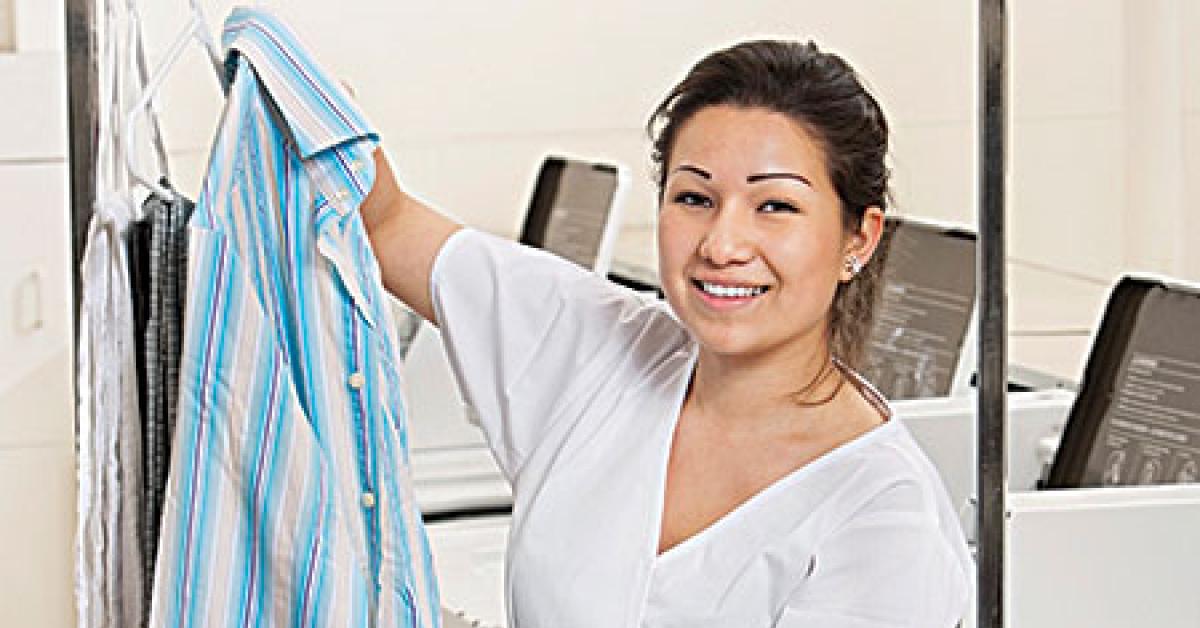CHICAGO — Through hard work and determination, you’ve been able to cultivate the self-service laundry side of your business.
With attendants in place and a laundry business up and running, many operators follow the progression of exploring the extra-profit center of wash-dry-fold/drop-off service.
Taking on this amenity, on top of your self-service laundry business, entails a new set of responsibilities and considerations—Do you have enough capacity to process orders? How can you avoid liabilities when processing customer-owned goods? What are the best packaging techniques for drop-off service work?
American Coin-Op reached out to various experts in the industry to weigh in on these questions, and more, to discover the do’s and don’ts of managing drop-off laundry service.
PACKAGING TECHNIQUES
Once a drop-off order has been processed, how can operators and attendants best present the finished laundry when returning it to the customer?
Though he calls the practice “old school,” Brendan Ristaino, sales manager at Barrington, N.H.-based distributor Yankee Equipment, explains that utilizing clear plastic bags, and hand-folding garments, is a tried-and-true practice when processing drop-off work.
“One thing [operators] do nowadays is [ensure] that those stacks aren’t too high, that they’re not over-bundled in the bag, and [not] trying to stuff too many clothes in one bag,” says Ristaino.
Rita P. Foley, owner of Regency Cleaners and White Star Cleaners, Durham, N.C., owns both a drycleaning and Laundromat business, processing orders for walk-in customers as well as commercial accounts for three universities in her area.
Foley spoke on the topic of wash-dry-fold packaging techniques at a Coin Laundry Association panel at Clean 2015 titled Your Guide to Wash, Dry, Fold: Folding, Packaging and Presentation Techniques.
When preparing bundles, Foley prefers to have linens, like towels, on the bottom of the package, followed by pants and shorts.
She then places underwear, T-shirts and socks in the middle, and packages these items with a fabric softener sheet to show customers that a softener was used in the process and to keep the garments smelling fresh.
“We finish the top of the bundle with what the attendant feels like is the nicest shirt that has been brought in with that group of clothing,” says Foley. “That’s the ‘bow’ on the top of the bundle. We place that on top and it really makes a nice package.”
SELLING THE SERVICE
When selling drop-off service to customers, J.D. Johnson, president of LaundryRx, a Milnor vended laundry equipment distributor based in Atlanta, stresses the importance of both interior and exterior store signage.
“Targeting customers with social media, such as Facebook, in conjunction with direct mail, are economical and effective forms of advertising,” he says.
For Chris Brick, regional sales manager, Maytag Commercial Laundry, wall signs and window decals provide a “constant reminder of the service offering.”
“It is important to clearly spell out the services and fees and, if possible, use a real-life example to help sell your services,” he says.
“Professional credibility and excellent service is critical to long-term success.”
In addition to promoting the service in-store and online, Joel Jorgensen, vice president of sales and customer services at Continental Girbau, says that radio is another “great advertising method.”
“It’s relatively inexpensive, pinpoints target markets and, when combined with an original jingle, makes a lasting impression.”
Ristaino explains that one of his store-owner clients has partnered with another local business in the area to help promote his drop-off service work.
“He made a deal with the supermarket to put a coupon on the back of the receipt,” he says.
“Knowing the synergy of the businesses around you really helps in marketing, initially.”
Ristaino highlighted one other form of self-promotion: word-of-mouth.
“All of the best wash-dry-fold operators in my area, they have grown their business from word-of-mouth, producing very good-quality wash-dry-fold.”
“Once you do a good job, people don’t mind paying more and they don’t mind coming back, and they won’t mind telling their friends about it,” he adds.
KNOW EXPECTATIONS
For Tony Regan, vice president of global sales, American Dryer Corp. (ADC), an organized process is key to managing drop-off service well.
“Be punctual with the work to have it completed on time,” he says. “Be neat and clean with the final presentation and make it convenient, with packaging, for people to transport the finished goods home.”
“Since it is a service piece of your business, and we’re in a service industry, knowing your customer is the key,” adds Ristaino.
“If you know what their expectations are, and meet and exceed those, you’re going to have a successful wash-dry-fold business.”
Missed earlier parts of this story? You can read them now here: Part 1, Part 2
Have a question or comment? E-mail our editor Bruce Beggs at [email protected].
